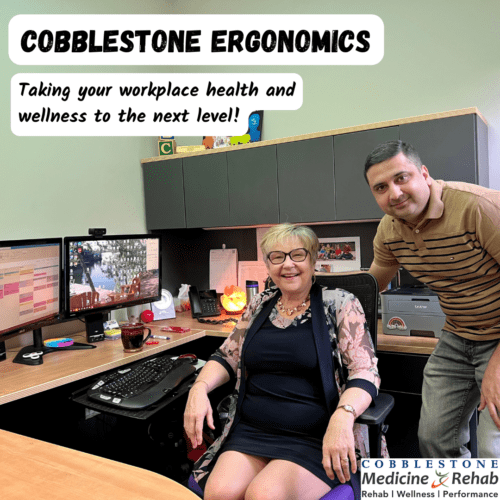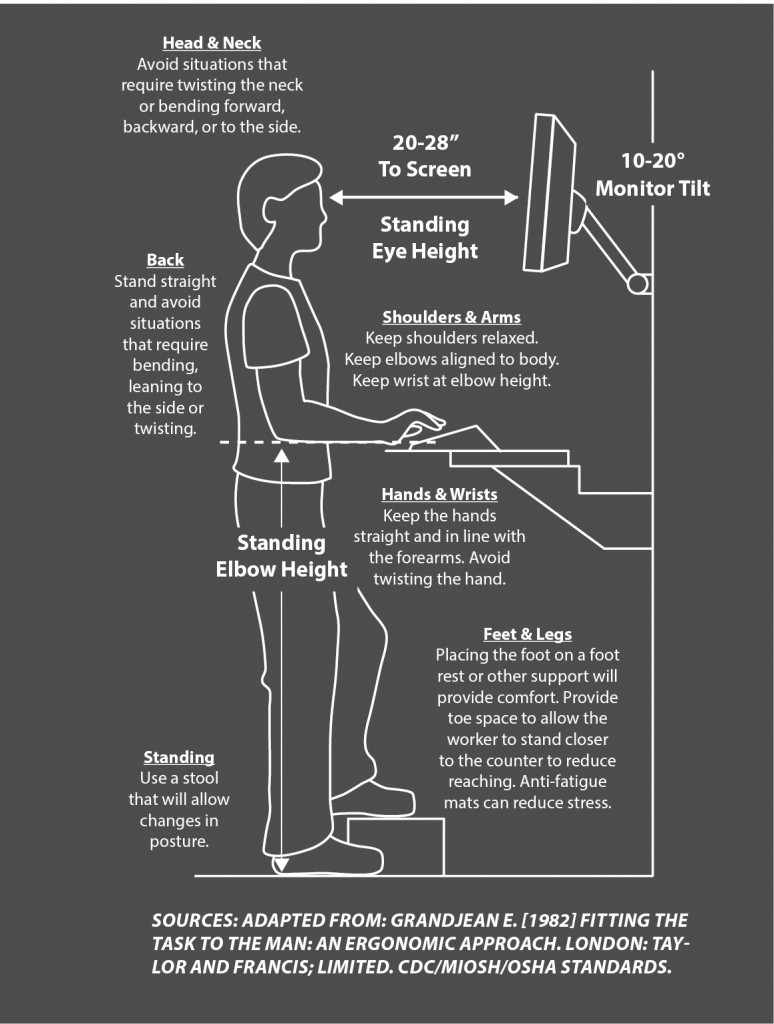
1/ In Office Workstation Assessment for employees
Employees receive a thorough In-Office workstation evaluation, equipment adjustment assistance, healthy posture and movement coaching as well as a comprehensive report.
2/ Home Office Workstation Assessments
A one-on-one virtual ergonomics assessment specifically for home office workers. Designed to prevent and reduce joint and muscle pain associated with poor home office ergonomics.
3/ Exercise and Movement Based Training Program For Specific Workplaces
There are a lot of job out there that require repetitive or prolonged postures/activities over long shifts. We can design specific exercise and movement based training programs for your staff based on what your employees have to do each day. Whether this is a pre-shift warm up or daily exercise programs for your staff – We Can Help with our movement specialists!
Ergonomics is the discipline that promotes safe, efficient, and healthy interactions between individuals and their work environments. Our goal at Cobblestone Medicine and Rehab Centres is to provide employees with the knowledge and tools to identify and resolve risk in their work area, as well as to improve behavioural habits to achieve a healthy work environment.
Having an ergonomic workstation means that your desk and the things on it are arranged in such a way, that they prevent injury and are well within reach and use. An ergonomic workstation also promotes good posture. Posture is the position in which you hold your body upright against gravity while standing, sitting or lying down. An ergonomically designed workstation promotes good posture and helps to:

Proper ergonomics play an instrumental role in how effectively you accomplish work and will help prevent suffering from work-related injuries due to strain and overuse. In the diagram below you will find both sitting and standing workstation recommendations to achieve a proper ergonomic workstation.

Our Physiotherapists, Chiropractors, and Occupational therapists have experience working with patients to improve posture and ergonomics. Our therapists will go into your workplace and arrange a patient’s workplace, making it ergonomically efficient.
Contact us to see if we can help you and your workplace!
Copyright © 2025 Cobblestone Medicine and Rehab. All rights Reserved.
Clarity Marketing & Design